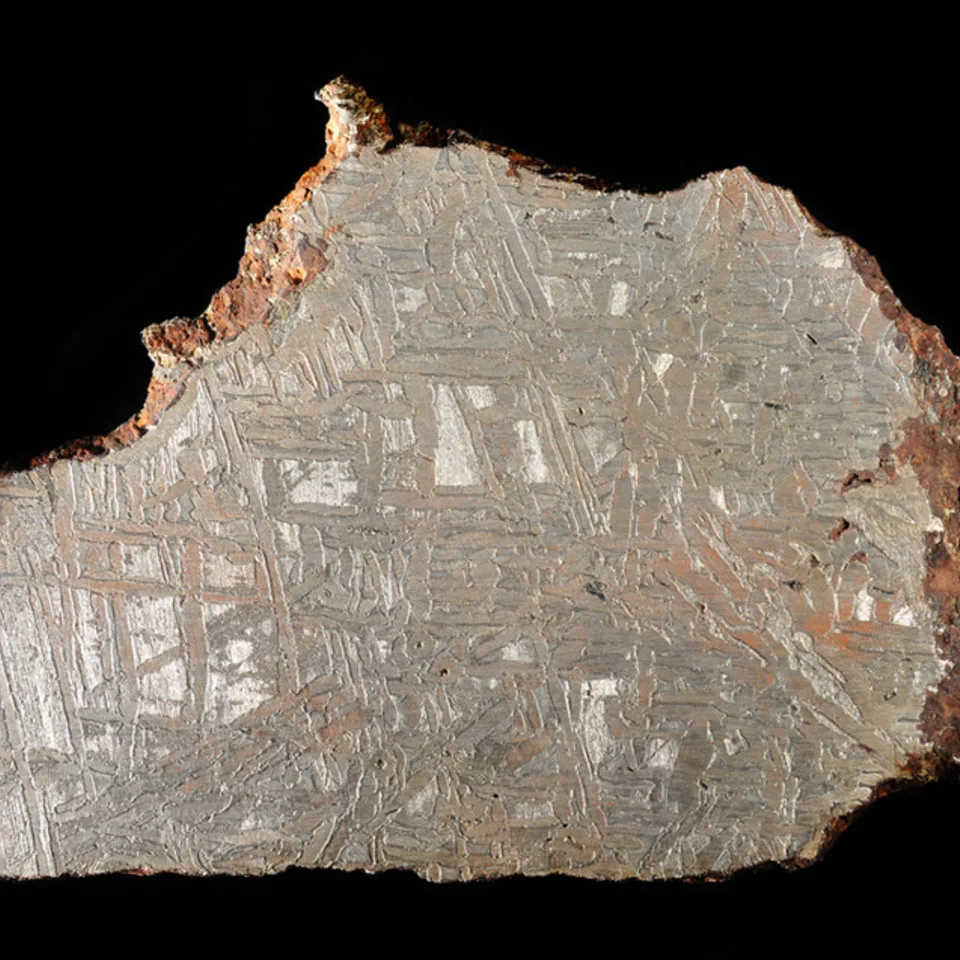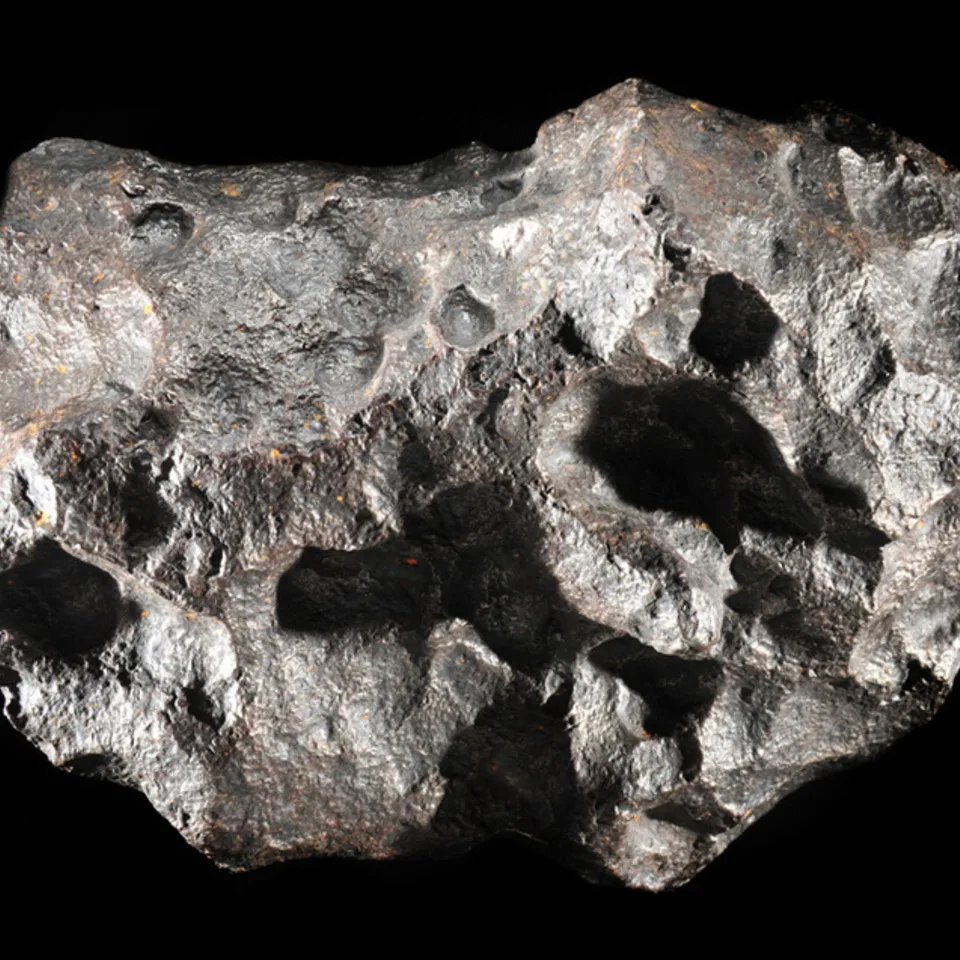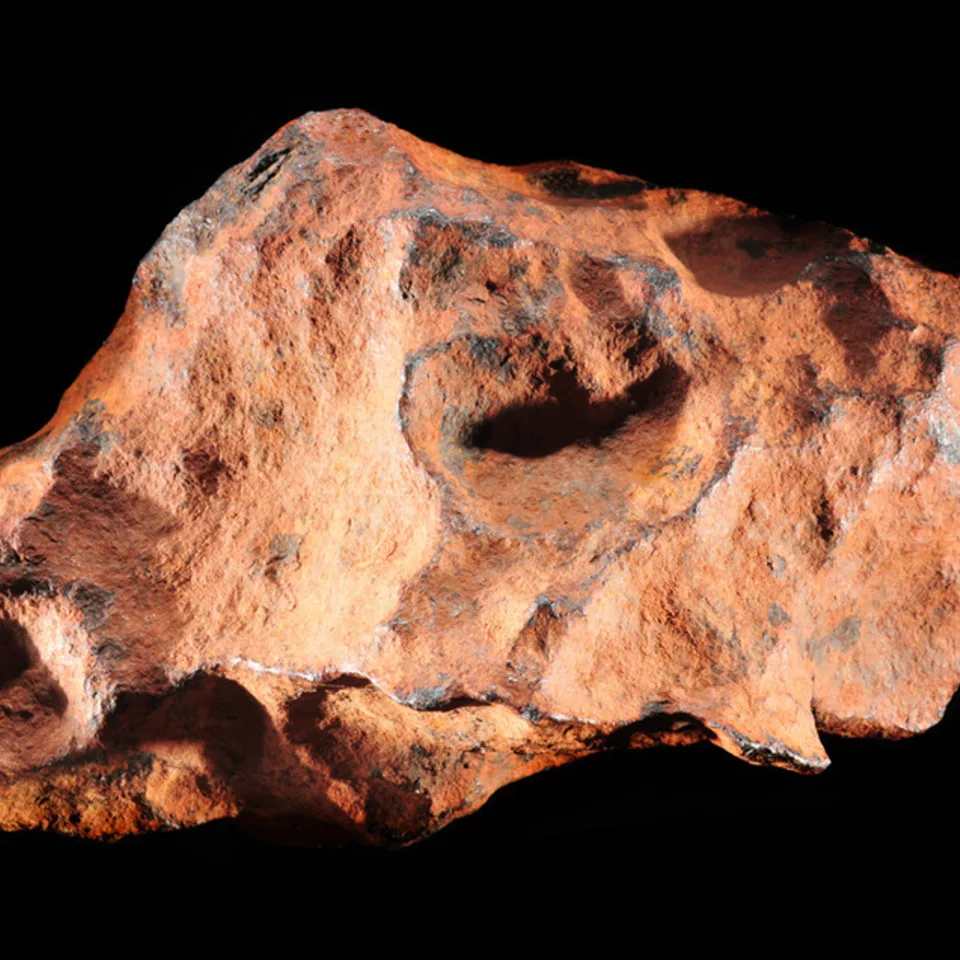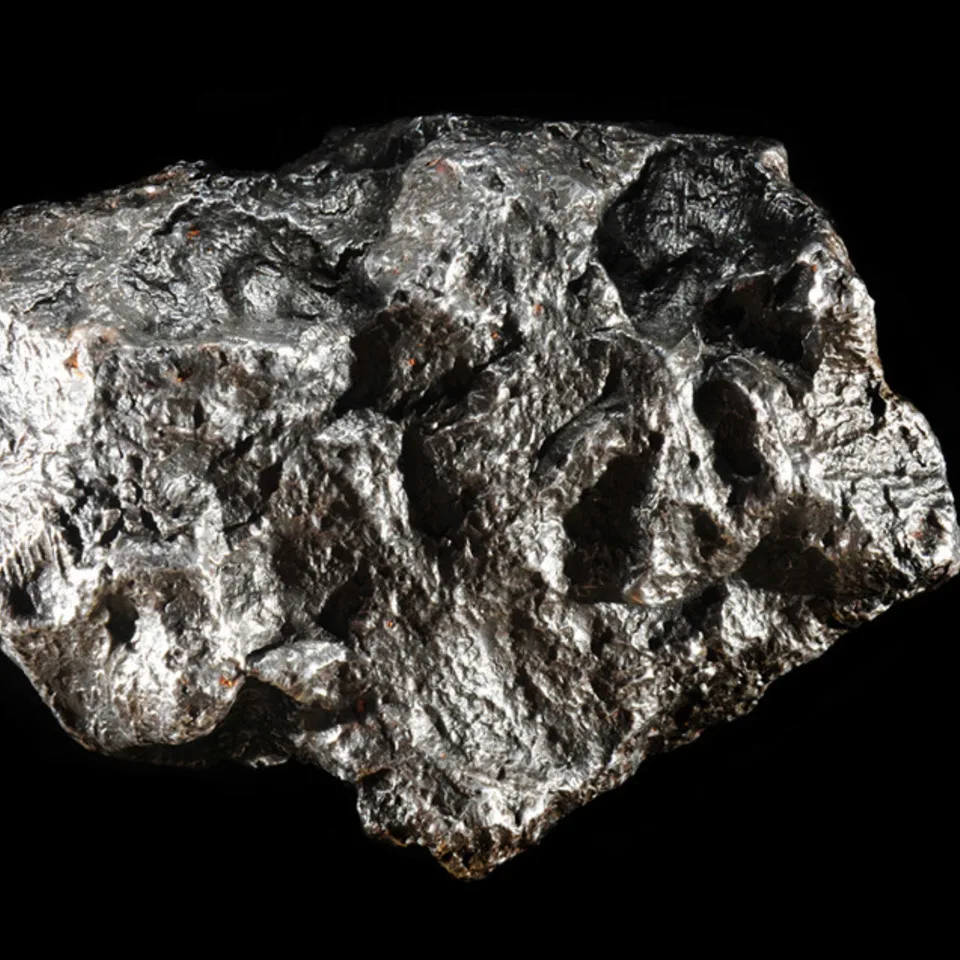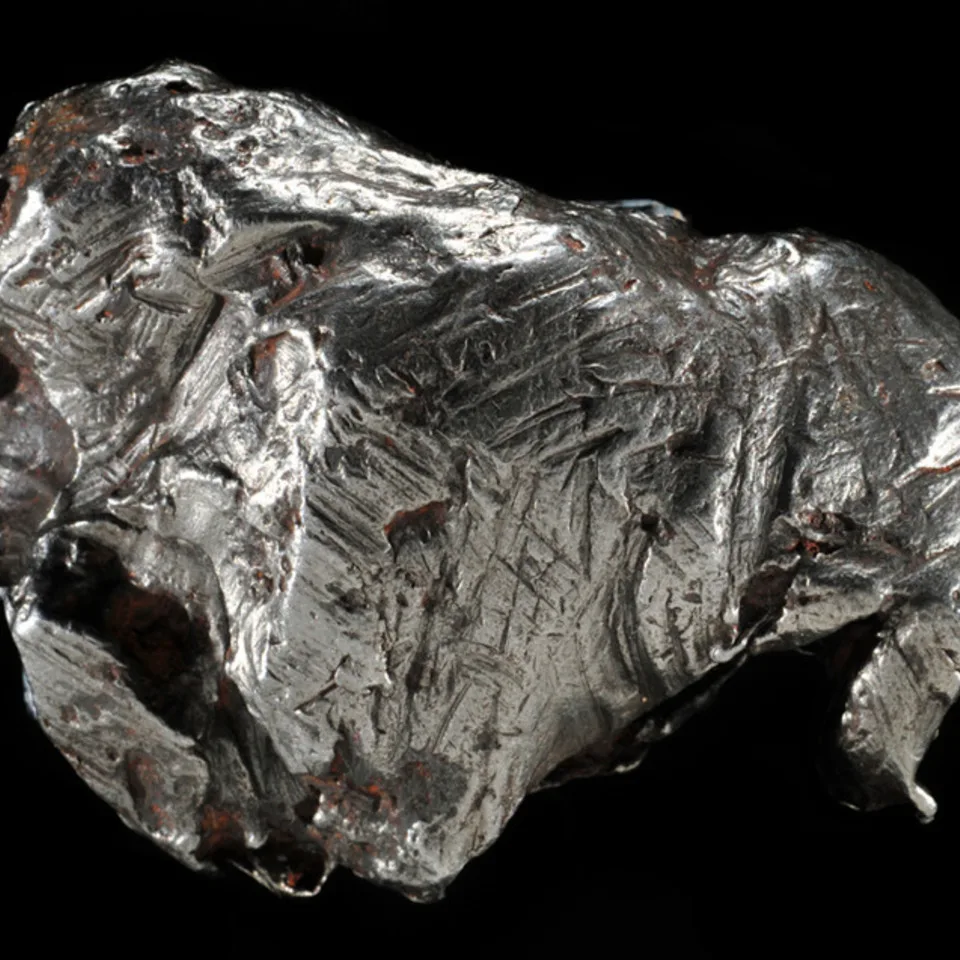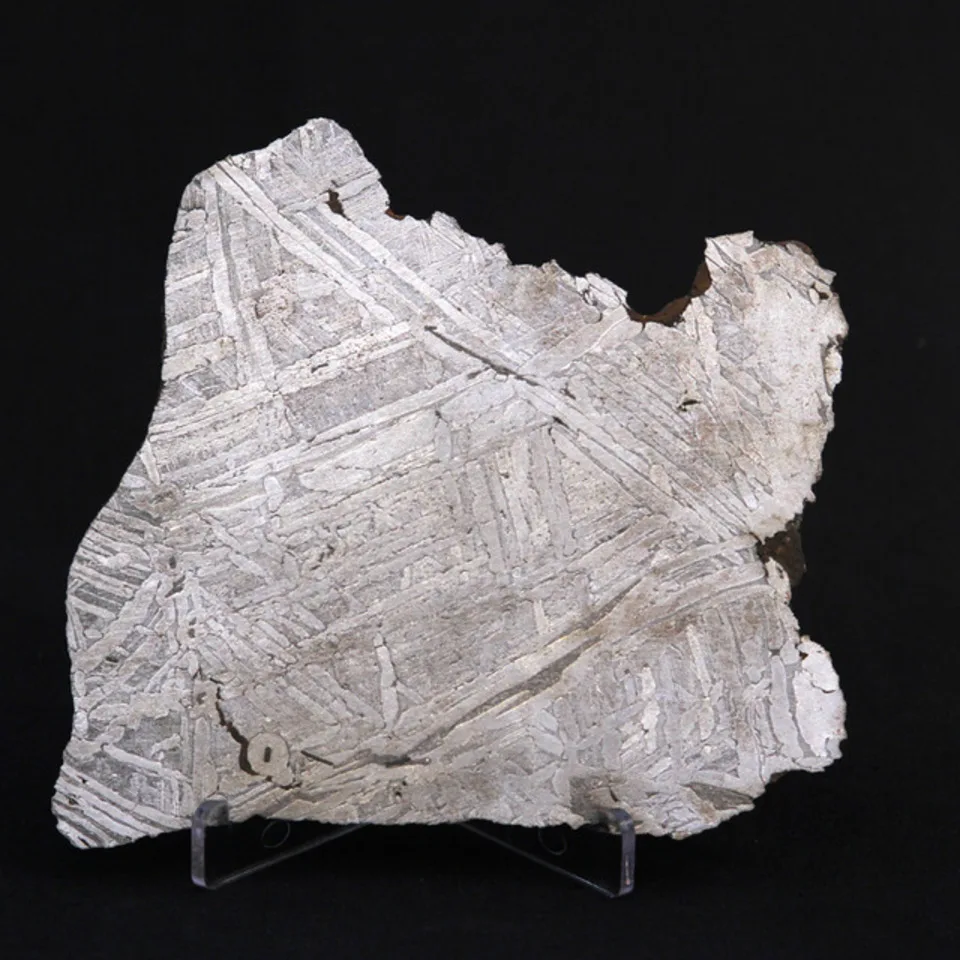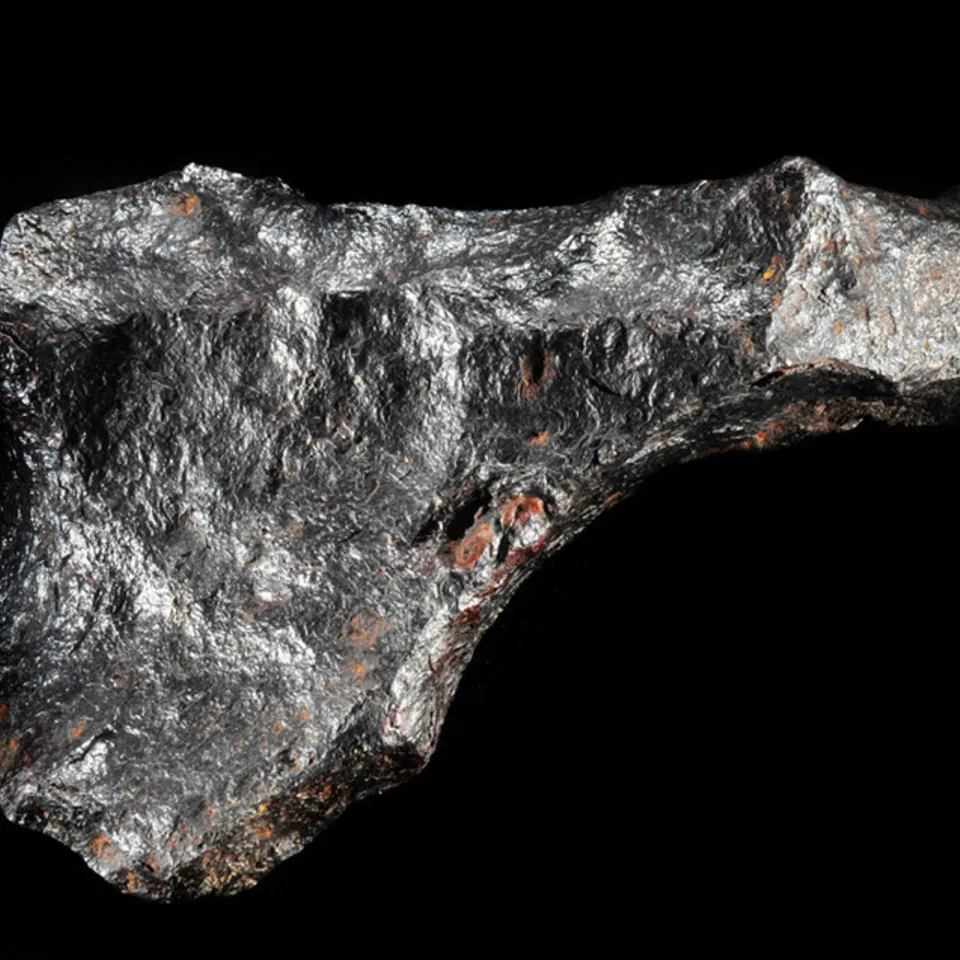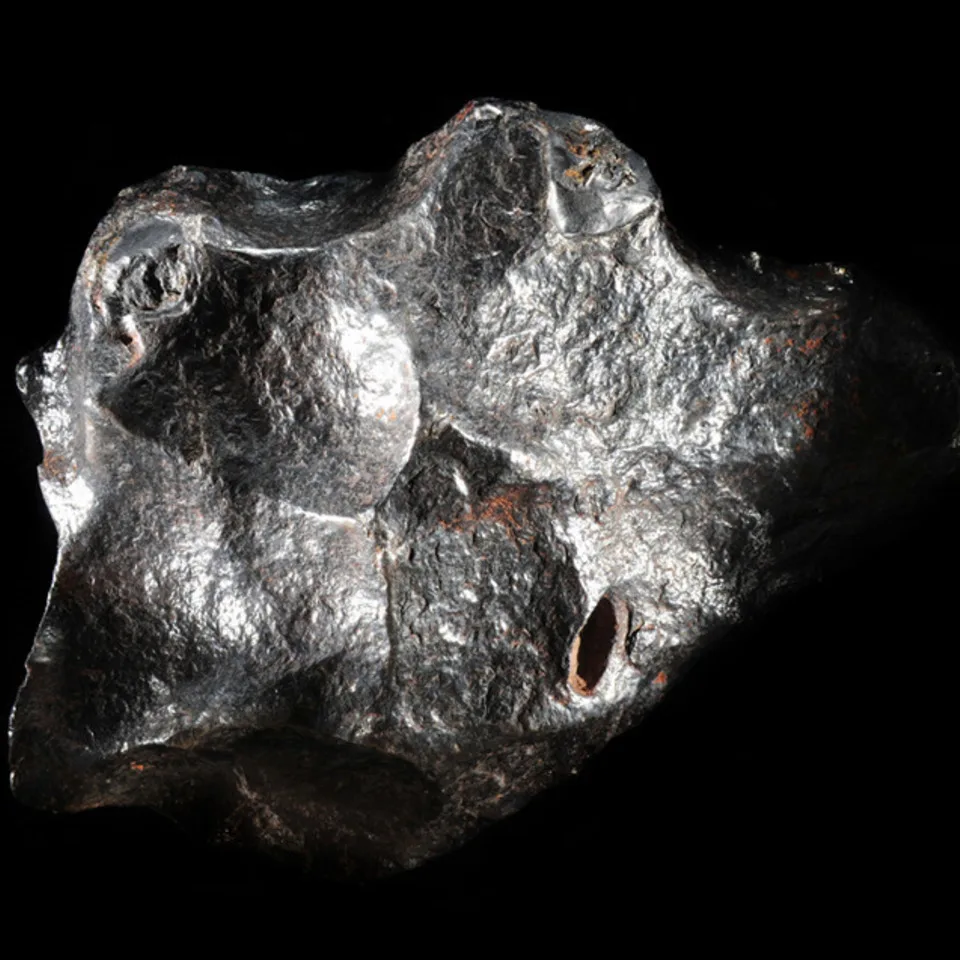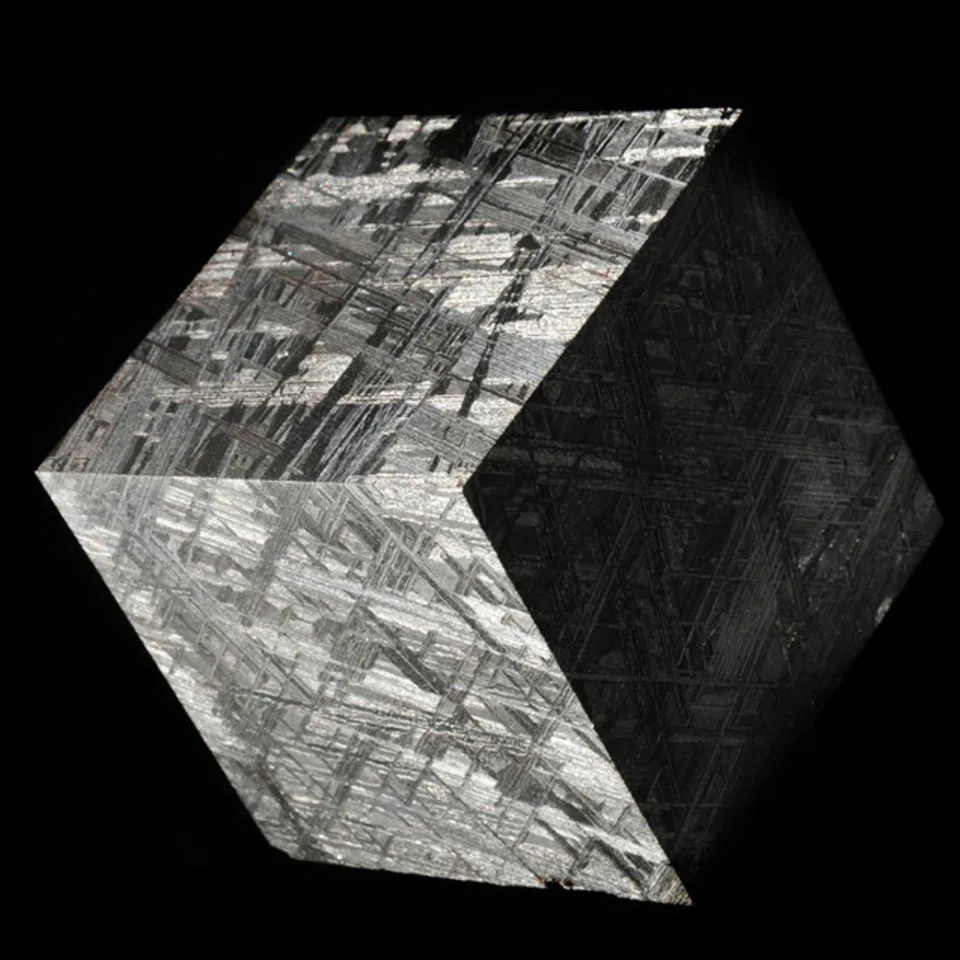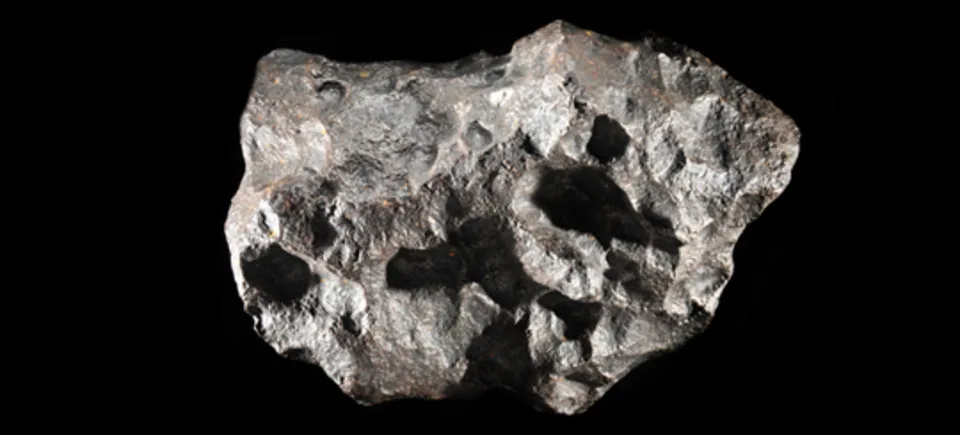Nickel-Iron Meteorites
It is thought that when asteroids melted, iron, being dense, sank to the centre to form a metallic core. These melted asteroids are known as differentiated since they have separated into concentric shells, with an iron core surrounded by a silicate mantle and perhaps even a silicate crust.
As this concentric, differentiated structure is similar to that of the terrestrial planets (Mercury, Venus, Earth and Mars), iron meteorites can tell us a great deal about how the metallic cores of planets formed. Around 5 out of every 100 meteorites that fall are iron. However, because iron is a tough material, they are more likely than stony meteorites to survive the fall to Earth.
This means that most meteorite craters are likely to have been caused by iron meteorites. The overwhelming bulk of these meteorites consists of the Fe,Ni-alloys kamacite and taenite. Minor minerals, when occurring, often form rounded nodules of troilite or graphite, surrounded by schreibersite and cohenite. Schreibersite and troilite also occur as plate shaped inclusions, which show up on cut surfaces as cm-long and mm-thick lamellae.
The troilite plates are called Reichenbach lamellae. The chemical composition is dominated by the elements Fe, Ni and Co, which make up more than 95%. Ni is always present; the concentration is nearly always higher than 5% and may be as high as about 25%. A significant percentage of nickel can be used in the field to distinguish meteoritic irons from man-made products, which usually contain lower amounts of Ni, but it is not enough to prove the meteoritic origin (e.g. some US coins).
